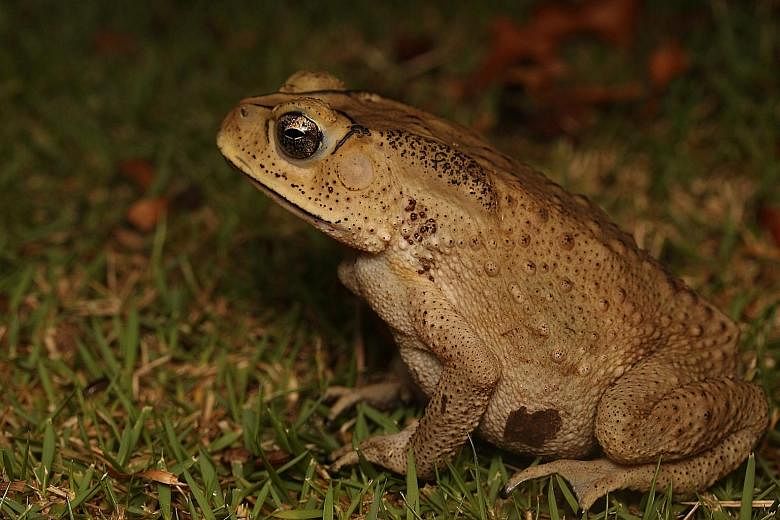A slithering snake that ends up dead on the roads may not receive the attention of motorists or bystanders, but a conservation group here is looking to change this.
The Herpetological Society of Singapore (HSS), which studies herpetofauna - a group of animals comprising reptiles and amphibians - wants details of encounters people may have with such roadkill.
They hope to collect information such as the date and time of the encounter, photographs of the carcass, as well as its precise location - which can be based on the Global Positioning System coordinates or nearest lamppost number. Data from previous encounters is also useful, said the HSS.
Photographs are important because they will help the group identify the species.
HSS scientific officer Kannan Raja said the information will be compiled on a public database. Over 30 entries have been submitted since the project was first publicised last month. Roadkill reported included a twin-barred tree snake from March 26, and a Muller's blind snake from April 3.
"Over time, we hope to use these data to generate maps to identify herp-roadkill hot spots and better understand certain species' distribution," he said.
Mr Kannan said the HSS often comes across herpetofauna roadkill during its visits to Singapore's nature areas, especially on roads adjacent to forests. Sometimes, the roadkill ends up being from a rare species.
This was the case on the island of Borneo. In 2002, the Indo-Chinese rat snake (Ptyas korros) was rediscovered through a roadkill encounter - the first time the species was recorded there for almost a century.
In Singapore, researchers identified a smooth slug snake (Asthenodipsas laevis) when a roadkill specimen was found in Old Upper Thomson Road in 2014. It was the first time in more than 30 years that the species was spotted here.
Roadkill data could also help to ease decision-making processes for the implementation of mitigation strategies, such as culverts under roads, or "toad tunnels", to facilitate herpetofauna road crossings, said Mr Kannan. Such measures have been implemented in places like the United States and Britain.
Ms Anbarasi Boopal, co-chief executive of wildlife rescue group Acres, said the HSS initiative could help highlight the susceptibility of such animals to vehicle collisions.
"It may be easier to convince developers to implement mitigation measures if it's a larger animal that could result in a serious accident, like a wild boar, or if the roadkill is an animal of conservation significance, such as a pangolin," she said.
But the numbers of reptiles or amphibians ending up as roadkill are likely to be much higher than those of mammals, even though there may be fewer reports of them because they are smaller creatures.
"Such citizen science projects will also increase awareness among road users to look out for animals when they drive or ride a bicycle," Ms Anbarasi added. "Eventually, this awareness will help to reduce roadkill."
Reptiles and amphibians play important roles in nature. Monitor lizards are scavengers, helping to get rid of dead matter, while frogs in a water body indicate good water quality. Even in the urban setting, pythons play a role as rat-busters, gobbling up rodents that humans consider pests.
Herpetofauna are cold-blooded creatures that depend on their surroundings to help them regulate their temperatures. This is why they can often be seen basking on roads - which retain heat through the night - to warm themselves up.
"These animals are often not noticed by drivers. Other times, some road users may even purposely swerve to hit them due to fear and a negative attitude towards them," said Mr Kannan.
Surveys done abroad have shown tyre marks on parts of the road where vehicles do not usually pass, such as on road shoulders.
Photographer Jasvic Lye, who documented wild animals killed by human activities and urbanisation in Singapore for over three years as part of her "Death by Man" photography project, said only about 10 per cent of the more than 100 carcasses she photographed were of herpetofauna. The rest were of birds or mammals, including civets and pangolins.
"I'm guessing that the small percentage of herpetofauna records is because many of their carcasses go unseen or unreported," she said.
"Unfortunately, herps are rarely viewed as cute or beautiful, even though they are so important to our ecosystem."
•Data on herpetofauna roadkill deaths can be submitted at tinyurl.com/herp-roadkills-sg


